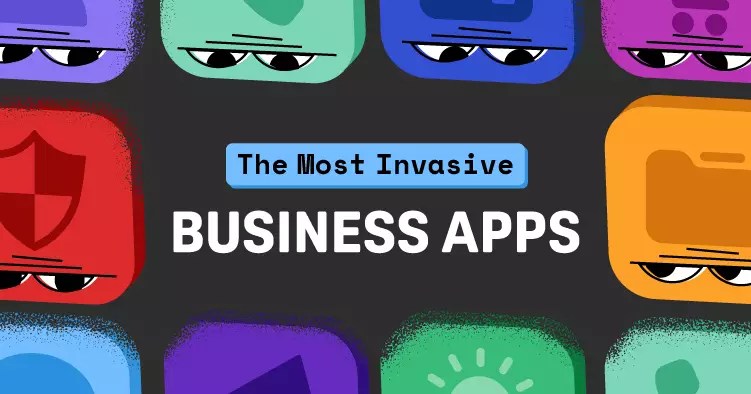In our digital age, it is nearly ubiquitous to click “agree” to privacy policies without a second thought. This passive compliance allows countless apps to harvest massive troves of personal data, as highlighted in a recent Pew survey. Astonishingly, while 57% of Americans encounter privacy policies weekly, only 9% take the time to read through them thoroughly. This leads to a widespread ignorance about what we are relinquishing when we download seemingly innocuous applications. Companies exploit the complexity of these agreements as a means to override our willingness to protect ourselves, ultimately prioritizing corporate gain over user privacy.
The landscape is troubling: an extravagant “freeware” model has burgeoned, linking access to apps with the surrendering of our data. The practice, ostensibly innocuous, is actually a veiled transaction of our personal information. Users think they are getting free services, while in reality they become commodities themselves. Research from Oxford University in 2018 indicates that a staggering 90.4% of free applications transfer user data to third parties, and each app transmits information to an average of five different entities. As a result, individuals unwittingly become participants in a data economy that thrives on their personal details.
The Complexity of Data Tracking
Basic definitions surrounding app privacy yield further confusion in the landscape of data permissions. The Apple App Store outlines a dizzying array of 32 distinct data segments classified into 14 broader categories—everything from ‘Contact Info’ to ‘Search History’. A segment represents a valuable data point: your name, emails, or even your location can be classified here. This intricacy facilitates a significant amount of data collection that the average user might not even recognize as invasive.
According to an analysis by OnDeck, business apps, in particular, can amass a substantial amount of this data. Apps that claim to facilitate business processes often come with not-so-business-friendly data permissions. The categorization of these apps—ranging from Marketing to Productivity—confirms that certain sectors prioritize user information to a disconcerting extent. Marketing applications often extract the maximum number of data points, attaining an average of 16.5 segments, whereas applications focused on less user-interactive tasks tend to collect fewer data points, indicating a disturbing trend towards more extensive surveillance mechanisms.
The Invasive Hall of Fame
Among these apps, those developed by big tech giants top the charts in their invasiveness. Facebook Messenger, for instance, leads the Communications category with 26 total data segments, followed closely by PayPal and eBay in their respective spheres. The alarming aspect lies not merely in the accumulation of data but in the nature of the data collected. Apps like Glassdoor, which may appear innocuous, require nearly as many personal data segments as those in more traditional industries, such as finance.
This prioritization of data collection translates into an environment where user convenience and corporate autonomy collide. For instance, a more streamlined app may necessitate minimal data, while expansive functionality correlates with extensive data demands. Yet the imbalance begs the question: at what point does user convenience evolve into privacy infringement?
Shifting Paradigms in the Marketing Sphere
The marketing field offers a unique lens to explore how invasive practices affect user consent. Digital marketing tools depend significantly on user data to optimize performance and reach, effectively turning users into unwilling participants in a data-sharing scheme. Apps like Instagram and Facebook gather all available personal data segments, showcasing the arms race for information. Their value proposition rests on maximizing user engagement through precise targeting—but this comes at a steep privacy cost.
The implications extend beyond sheer data collection. As reports show, corporate reputation increasingly hinges on how data privacy is perceived by the public. Companies such as Adobe have slipped in trustworthiness rankings despite offering innovative solutions—falling victim to the perception that invasive practices undermine their commitment to user security. The importance of data management thus shifts from being a back-office consideration to a critical component of brand identity.
Empowering Users through Awareness
As concerns mount about the potential misuse of personal data, awareness becomes imperative. Users need tools to discern which applications respect privacy and which blatantly disregard it. The inadequacy of privacy policies is throwing consumers into a perilous zone of trust. By investigating minimal data-collecting alternatives—like Indeed for job searching, or Cisco Webex for video conferencing—individuals can reclaim autonomy over their digital footprints.
Engaging with privacy settings, understanding data types, and closely evaluating the permissions requested during app installation can all contribute to a more informed user experience. As technological advancements proceed unabated, an enlightened user base must advocate for privacy rights and demand greater transparency from companies that persist in cavalier data collection practices. In this environment, being merely a consumer is no longer enough; informed participation is essential to safeguard personal privacy in a data-obsessed world.


Leave a Reply